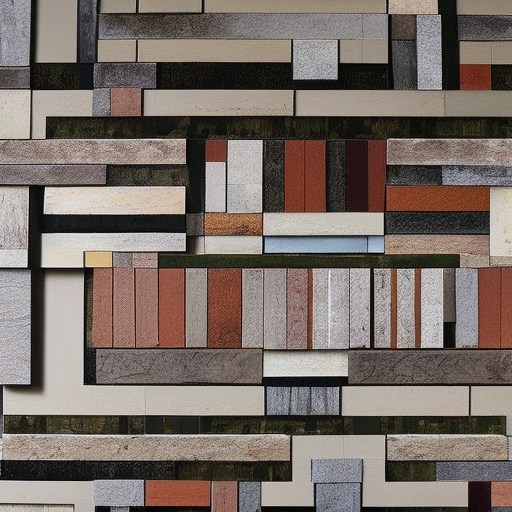Summary: Conceptual art is a movement that emerged in the 1960s, focusing on the idea or concept behind the artwork rather than its physical form. It challenges traditional notions of art by prioritizing intellectual engagement and questioning the role of aesthetics. Conceptual artists employ a wide range of mediums, including text, photography, performance, and installation, to convey their ideas. This movement has had a significant impact on the art world, influencing subsequent generations of artists and reshaping the definition of art itself.
Origins and Characteristics
Conceptual art emerged as a reaction against the formalism and commercialization of the art world. Artists sought to break free from the constraints of traditional art forms and explore new ways of engaging with ideas. The focus shifted from the object to the concept, with the artwork often existing as a set of instructions or documentation rather than a physical object.
Mediums and Techniques
Conceptual artists employ a wide range of mediums and techniques to convey their ideas. Text-based works, such as manifestos, statements, and instructions, are common in conceptual art. Artists also use photography to document their ideas or create visual representations of concepts. Performance art allows artists to engage directly with the audience, often blurring the boundaries between art and life. Installation art creates immersive environments that challenge viewers’ perceptions and invite them to interact with the artwork.
Themes and Concepts
Conceptual art explores a variety of themes and concepts, often addressing social, political, and philosophical issues. Some artists focus on language and communication, using text and linguistic structures to convey their ideas. Others explore the relationship between art and society, questioning the role of the artist and the institution. Conceptual art also challenges the notion of authorship, as many works are created collaboratively or rely on the participation of the audience.
Impact and Legacy
Conceptual art has had a profound impact on the art world, reshaping the definition of art and challenging traditional notions of aesthetics. It has influenced subsequent generations of artists, leading to the development of new art movements and approaches. The emphasis on ideas and concepts rather than technical skill or craftsmanship has opened up new possibilities for artistic expression. Conceptual art has also sparked debates about the nature of art and its relationship to society, further expanding the discourse around contemporary art.
Key Artists
Several key artists have played a significant role in the development of conceptual art. Sol LeWitt is known for his systematic approach and use of instructions to create artworks. Lawrence Weiner explores the relationship between language and art, often presenting his ideas as text-based works. Yoko Ono’s conceptual art often involves audience participation and challenges traditional notions of authorship. Marcel Duchamp, although not strictly a conceptual artist, laid the groundwork for the movement with his readymades and his emphasis on the idea behind the artwork.
Conclusion
Conceptual art is a movement that emerged in the 1960s, challenging traditional notions of art and prioritizing the idea or concept behind the artwork. It employs a wide range of mediums and techniques, exploring themes and concepts that address social, political, and philosophical issues. Conceptual art has had a profound impact on the art world, reshaping the definition of art and influencing subsequent generations of artists. It continues to be a vital and influential movement in contemporary art.












